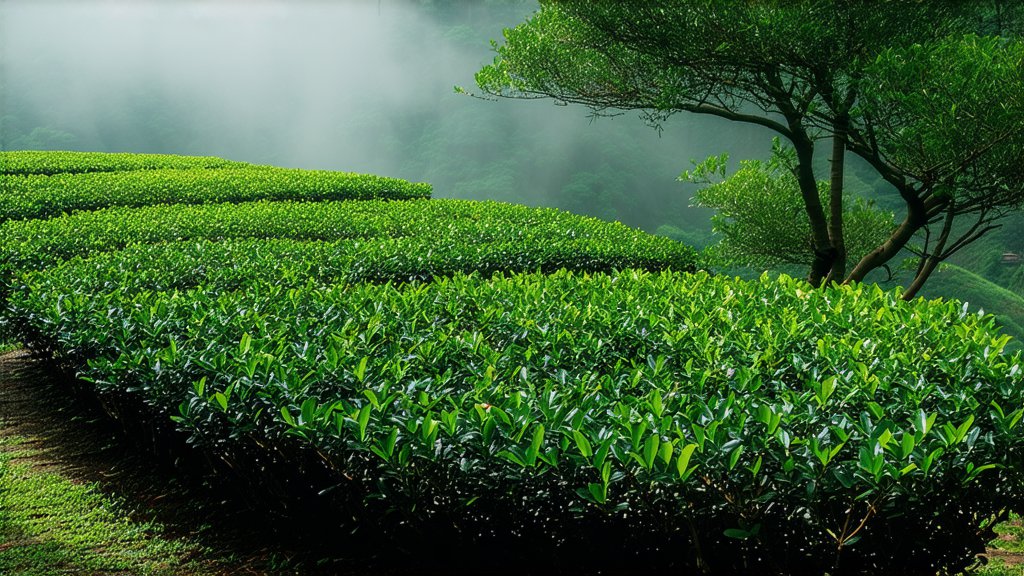
In the vast and diverse landscape of Chinese tea culture, one variety stands out for its unique processing method and distinctive flavor profile – the Huangshan Maofeng, a premium yellow tea hailing from the picturesque mountains of Anhui province. This article embarks on a journey through the history, varieties, meticulous craftsmanship involved in its production, and the art of appreciating this golden elixir.
A Glimpse into History
Huangshan Maofeng, translating to "Yellow Mountain's Peak Fur," traces its origins back to the Tang Dynasty (618-907 AD), though it gained prominence during the Ming Dynasty (1368-1644 AD). Its name is derived from the famous Yellow Mountains (Huangshan), which are not only celebrated for their breathtaking natural beauty but also serve as the cradle for this exquisite tea. Over centuries, Huangshan Maofeng has been cherished by emperors, poets, and common folk alike, becoming a symbol of China's rich tea heritage.
Varieties and Characteristics
As a member of the yellow tea family, Huangshan Maofeng undergoes a unique partial oxidation process that sets it apart from green, black, white, or oolong teas. This special treatment gives the tea its characteristic yellowish hue and a sweet, mellow flavor profile with subtle fruity undertones. The leaves themselves are long, slender, and covered in fine downy hairs, reminiscent of the mountain peaks after which they are named.
The Art of Craftsmanship
The making of Huangshan Maofeng is an intricate dance between man and nature, demanding precision and patience at every step:
-
Leaf Plucking: Only the tenderest buds and top leaves are handpicked, usually in early spring when the first flush of growth appears. This ensures optimal freshness and flavor.
-
Withering: Freshly picked leaves are spread thinly on bamboo mats under the gentle sun or in shaded areas to slowly lose moisture without undergoing significant oxidation.
-
Fixation: Unlike green tea, where high heat quickly halts enzyme activity, yellow tea undergoes a mild fixation process. The leaves are briefly heated, allowing some oxidation to occur, which contributes to its unique color and taste.
-
Wrapping and Sweating: A defining feature of Huangshan Maofeng production is the wrapping phase. After initial drying, the leaves are bundled tightly in cloth or paper and left to 'sweat' for several hours. This controlled environment promotes further oxidation and develops the tea's signature yellow color and aroma.
-
Final Drying: Once unwrapped, the tea undergoes a final slow drying process to reduce moisture content to around 5%, ensuring stability and preserving its delicate flavors.
The Ritual of Tasting
Appreciating Huangshan Maofeng goes beyond mere consumption; it is an experience that engages all senses:
-
Visual Appreciation: Observe the dry leaves, noting their slender shape and golden-yellow hue. As they unfurl in hot water, watch the transformation into a vibrant yellow-green infusion.
-
Aroma: Inhale deeply before sipping. The aroma is a complex blend of sweet hay, fresh grass, and a hint of apricot, reflecting the tea's unique processing.
-
Flavor Profile: Take a slow sip, allowing the mellow sweetness to coat your palate. Notice how the initial subtlety gives way to deeper, more complex flavors, including notes of honey, melon, and a whisper of floral essence.
-
Mouthfeel: Pay attention to the silky texture of the tea, a testament to its fine quality and careful handling throughout the production process.
-
Aftertaste: Savor the lingering sweetness and slight cooling sensation that remains after swallowing, a hallmark of well-crafted Huangshan Maofeng.
In conclusion, Huangshan Maofeng offers not just a beverage but a gateway into the depths of Chinese tea philosophy—harmony between humanity and nature, simplicity in complexity, and the pursuit of perfection through tradition. Each cup tells a story of ancient mountains, skilled hands, and the timeless quest for tea's purest expression. As you embark on your own journey with this golden secret of Chinese tea, may it inspire moments of reflection, connection, and pure enjoyment.